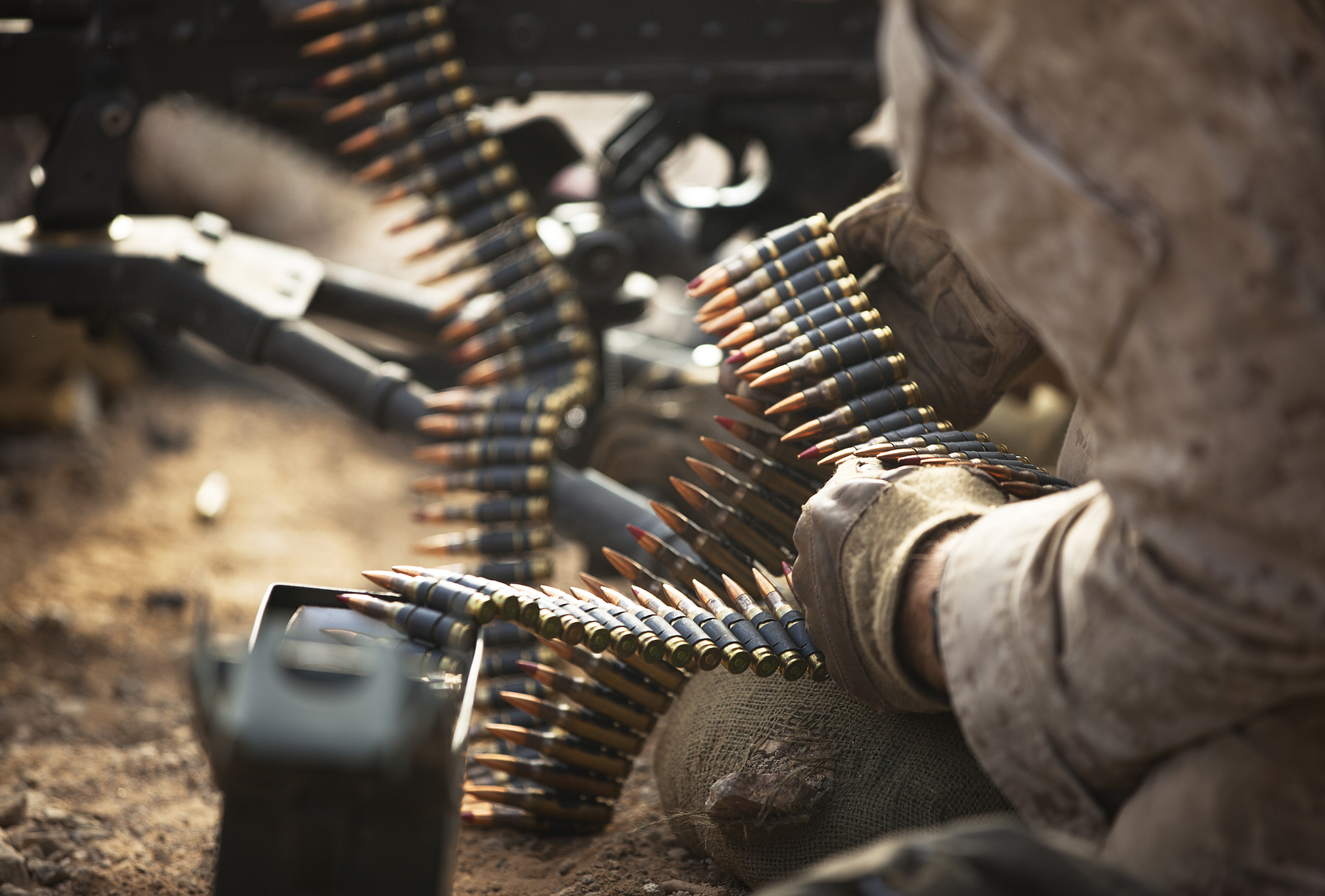India’s Counterinsurgency Campaigns Are Missing the Warning Signs
Editor’s Note: Insurgencies have plagued India throughout its modern history, and several remain active today. Until recently, it seemed that the Indian government was making progress, however fitfully, in reducing the scope and scale of the violence. Sarah Watson of CSIS argues that today Modi's government is dropping the ball. After significant gains, India's counterinsurgency campaigns are stalling, and the government appears unable to either conciliate or coerce effectively.
***

Published by The Lawfare Institute
in Cooperation With

Editor’s Note: Insurgencies have plagued India throughout its modern history, and several remain active today. Until recently, it seemed that the Indian government was making progress, however fitfully, in reducing the scope and scale of the violence. Sarah Watson of CSIS argues that today Modi's government is dropping the ball. After significant gains, India's counterinsurgency campaigns are stalling, and the government appears unable to either conciliate or coerce effectively.
***
India’s counterinsurgency strategy has historically vacillated between, as Indian political scientist Rajesh Rajagopalan put it, “force and compromise.” Under the government of Prime Minister Narendra Modi, however, India seems to have lost the thread on both force and compromise. It no longer tries to articulate a convincing political strategy leading towards peace in either of its major counterinsurgency campaigns. But neither is it using force more effectively than previous administrations. The shift away from compromise without a corresponding re-evaluation of the use of force may explain why Modi has overseen a rapidly worsening situation in Kashmir and serious setbacks in the fight against Maoist insurgents in India’s east. Setbacks are part of any counterinsurgency campaign. But state and national government action, or inaction, has managed to turn individual setbacks into more consequential failures.
On March 11, 12 members of the Central Reserve Police Forces (CRPF) were killed, and two more wounded, in an attack by guerrillas of the Communist Party of India (Maoist), commonly known as Naxalites. The much-fractured Naxalite movement has its roots in 1970s rural agitation, but in the intervening decades it has evolved into a cadre-based guerrilla insurgency confined to an area of operations known as the “red belt” in India’s undeveloped eastern forests. Although the Naxalites are no closer to their goal of replacing India’s liberal democracy with a communist system of government, they have proved difficult to defeat entirely.
In the March 11 attack, Naxalites struck a convoy of more than 100 CRPF officers on their way to guard a road-building crew in the Sukma district of the eastern state of Chhattisgarh. What should have been a warning went unheeded, and on April 14, six weeks after the first attack, Naxalites struck again in the same district, this time killing 25 officers less than a mile and a half from their base. The CRPF squad of 36 was part of a group of 99 officers guarding a road-building crew and were attacked while they ate lunch. Some reports put the number of Naxalites as high as 400, a sign that the cadres feel comfortable gathering in large formations, at least for the period preceding an attack. Despite the March incident, the CRPF party apparently had lowered their guard and even disengaged their weapons while they ate lunch. Similarly, the Indian government did not fully respond until the second attack. Home Minister Rajnath Singh—who had recently told Parliament that the strike was a sign of Naxalite attempts to lift flagging morale—deployed 2,000 reserve commandos to the area and launched in an internal investigation into what had gone wrong.
Incidents of violence experienced a steep decline since the end of the last decade ... But recent data show more signs of stagnation than victory.
Thanks largely to improved state-level anti-insurgent campaigns, particularly the development of well-trained paramilitary commando squads along the lines of the Andhra Pradesh Greyhounds, India saw significant gains against the insurgency between 2010 and 2014. Incidents of violence experienced a steep decline since the end of the last decade, when they crossed 2,000 per year; they now hover just above 1,000 per year. But recent data show more signs of stagnation than victory. Despite this, the Modi administration has allowed prior administrations’ population outreach efforts to fall into desuetude. Previous annual reports on the conflict from the Ministry of Home Affairs include several pages on efforts to raise the standard of living of communities in the affected areas. The most recent report eliminates this section and accuses two grassroots groups organizing tribal communities in eastern India of being Maoist fronts.
The government has focused its efforts on road-building in the area; while this does much to hasten economic development, it also opens the mineral-rich area to increased exploitation by mining companies. Conflicts over land use are at the heart of the local population’s limited support for Naxalites, and the insurgents use attacks on extractive industries to bolster their image as defenders of the dispossessed. State and national governments’ focus on building India’s mining industry will make compromise on the land rights of local peoples even more difficult to reach.
In Kashmir, India didn’t just sleep through its wake-up call; it turned off the alarm entirely. In April, a video clip surfaced showing a Kashmiri man tied to the front of an Indian Army jeep as it led an Army convoy through a town. It later emerged that he was being used as a human shield and a deterrent to stone throwers and had been tied to the truck for over five hours. The cruelty of the incident was an unforced error for the military, but rather than try to make amends, the Army doubled down. In late May, news broke that the Indian Army had issued Major Leetul Gogoi, the commanding officer of the unit responsible for the human shield incident, a commendation for “sustained efforts in counterinsurgency.” Army Chief of Staff Bipin Rawat personally defended Gogoi as having made the right call. Gogoi was allowed to give a public self-justification, arguing that he had saved 12 lives by peacefully dispersing a crowd around a polling station.
Although the situation in Kashmir has never been “normal,” the most recent instance of strategic disarray dates back two years to the formation of a governing coalition between Modi’s Bharatiya Janata Party (BJP; nationalist and right of center) and the People’s Democratic Party (PDP; pro-autonomy, but not secessionist). This alliance is unlikely, to say the least: only 10 years ago Hindutva activists were accusing PDP leader Mufti Mohammad Sayeed of preparing to expel all Hindus from the state. The BJP, for its part, has long called for the abrogation of Article 370 of the Indian constitution, which gives Jammu & Kashmir legislative autonomy, and its ministers continue to tease this as a policy goal.
These strange bedfellows, bound only by their shared desire for power, united under an “Agenda for Alliance” which punted on the two parties’ serious disagreements but made concrete promises of normalized relations with Pakistan and “sustained and meaningful dialogue” with internal stakeholders. Two years on, the security situation at the Line of Control has sharply deteriorated, the youth of Kashmir have turned against the state, and the rhetoric of the independence movement has shifted towards millenarianism. Turnout in Srinagar in an April Parliament bypoll was 7 percent, the lowest ever.
[The Indian Army] is being asked to indefinitely carry out operations using only the limited force appropriate in a classic Indian counterinsurgency, while the dialogue such operations are meant to support is not taking place.
Ajai Shukla, one of India’s most thoughtful security analysts, suggested that it would have been preferable for Gogoi’s troops to have opened fire on the crowds rather than defy their doctrine by using a human shield. This hints at the Indian Army’s unsustainable position in Kashmir: It is being asked to indefinitely carry out operations using only the limited force appropriate in a classic Indian counterinsurgency, while the dialogue such operations are meant to support is not taking place. Similarly, the CRPF has been tasked with executing a complex counterinsurgency despite its limited capacity for basic tasks such as force protection. As both conflicts boil, government rhetoric is contributing to a blurring of the distinction between citizenry and insurgency. Previous Indian governments have made grave errors in Kashmir and the red belt, but they have always strived to maintain this line.
Insurgent violence has continued since these incidents earlier this year. In June, Naxalites killed three more security personnel in Chhattisgarh; in July, Kashmir saw a horrific attack on a convoy of innocent pilgrims, killing seven. Given its isolation and poverty, the red belt is faced with likely low-level violence for another decade, at high cost to the region’s development prospects. In Kashmir, the possible outcomes are more dire; the independence movement may already be seeing increased religious radicalization as rival commanders compete for the allegiance of Kashmiri youth. In July, al-Qaeda announced a new affiliate in the valley headed by a young Kashmiri.
To avoid worst-case scenarios, India should return to the two-pronged approach that has served it well in past insurgences: the efficient use of force accompanied by unflagging efforts at compromise with all but the most extreme actors. In the red belt, this may mean deploying the army to bolster the CRPF, while also opening a wide-ranging dialogue with grassroots organizations and even insurgents. In Kashmir, the government must simultaneously recognize that the insurgency thrives on external support and that not every opponent there is a terrorist or a traitor. Renewed peace efforts must take as their starting point the assumption that many Kashmiri grievances are legitimate and open to resolution within the framework of a democratic society. And the Indian government must act fast; as things are now, the space for compromise is rapidly shrinking.





